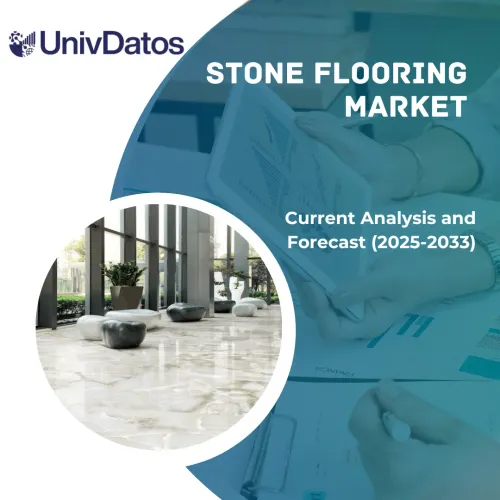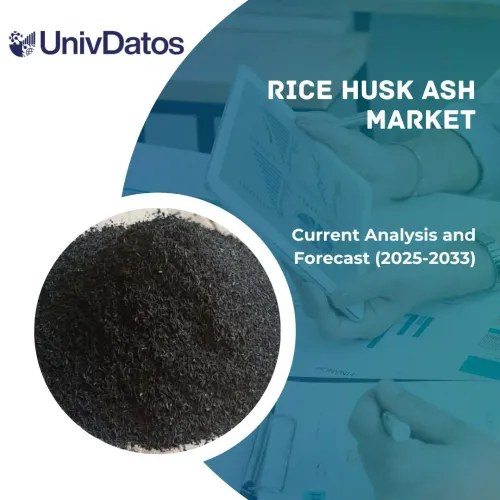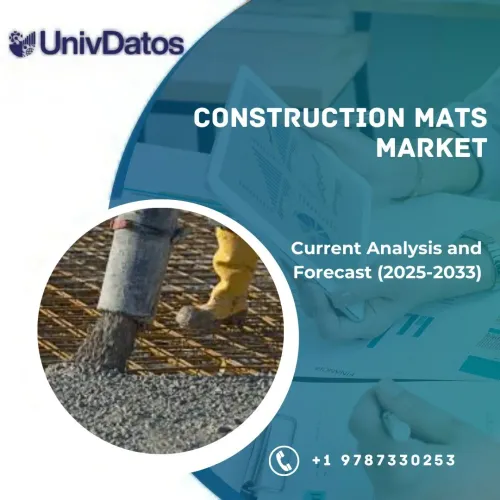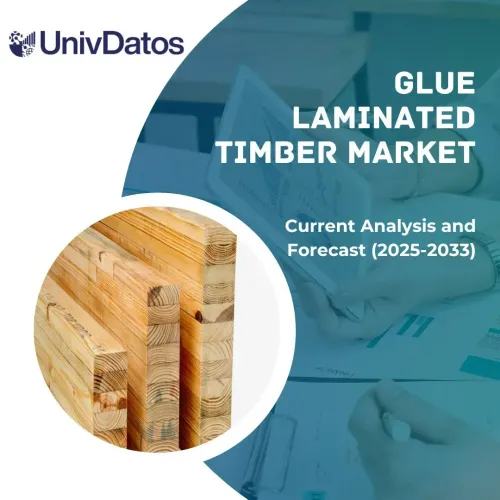MENA 건설 장비 시장: 현재 분석 및 예측 (2023-2030)
제품 유형(압축기, 굴삭기, 지게차, 휠 불도저, 프런트 로더, 덤프 트럭 등)에 대한 강조; 장비 유형(토공 장비, 자재 취급 장비 등); 최종 사용 산업(건설, 광업, 석유 & 가스, 제조 등); 국가
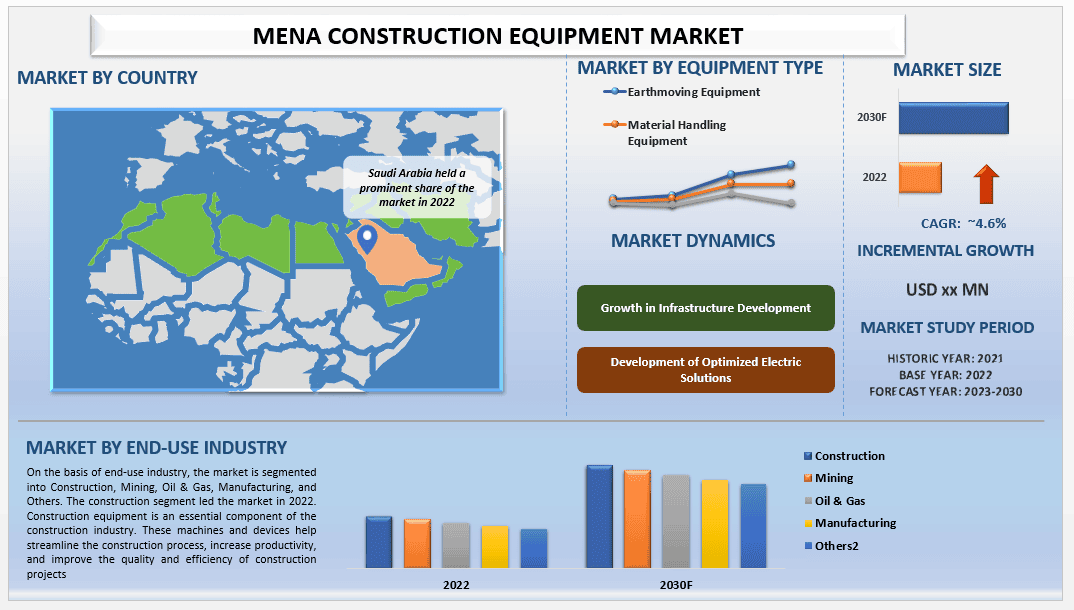
MENA 건설 장비 시장은 2023-2030년 예측 기간 동안 4.6%의 강력한 연평균 성장률(CAGR)로 성장할 것으로 예상됩니다. MENA(중동 및 북아프리카) 지역의 건설 장비 산업은 최근 몇 년 동안 상당한 성장을 보였습니다. 이러한 성장은 인프라 개발 증가, 도시화, 건설 활동을 촉진하기 위한 정부 이니셔티브 등 여러 요인에 의해 주도됩니다. MENA 지역은 공항, 항만, 도로, 철도와 같은 대규모 인프라 프로젝트가 급증했습니다. 사우디 아라비아, UAE, 카타르와 같은 국가들은 경제를 다각화하고 석유 수입에 대한 의존도를 줄이기 위해 건설 부문에 막대한 투자를 하고 있습니다. 이러한 프로젝트에는 굴삭기, 크레인, 불도저, 로더를 포함한 광범위한 건설 장비가 필요합니다.
MENA 지역의 도시화 추세는 건설 장비에 대한 수요에 기여합니다. 도시로 이주하는 사람들이 늘어남에 따라 주거용 및 상업용 건물, 쇼핑몰, 호텔 및 기타 인프라에 대한 필요성이 증가합니다. 이는 건설 기계 및 장비에 대한 수요를 증가시킵니다. 또한 이 지역은 글로벌 및 현지 업체 모두와 경쟁이 치열합니다. Caterpillar, Hitachi, Volvo 및 JCB와 같은 회사는 이 지역에서 강력한 입지를 가지고 있습니다.
시장에서 활동하는 주요 업체로는 Caterpillar Inc., Komatsu Ltd., Hitachi Construction Machinery Co., Ltd., JCB Ltd., Volvo Construction Equipment AB, Liebherr Group, SANY Group, Bobcat Company, Terex Corporation 및 Hyundai Construction Equipment Co., Ltd.가 있습니다.
보고서에 제시된 인사이트
“제품 유형 중 굴삭기 부문이 2022년 시장 점유율을 지배할 것입니다.”
굴삭기 부문은 2022년에 시장을 주도했습니다. 리스 및 렌탈 서비스와 같은 다양한 금융 옵션을 통해 건설 회사, 계약자 및 개인이 굴삭기를 더 쉽게 이용할 수 있습니다. 저렴한 금융 옵션은 굴삭기의 구매 및 사용을 장려합니다.
“장비 유형 중 토공 장비 범주가 2022년 시장 점유율을 지배할 것입니다.”
굴삭기, 불도저, 휠 로더와 같은 토공 장비는 건설 프로젝트의 효율성과 생산성을 높이는 데 도움이 됩니다. 이러한 기계는 기존 방식에 비해 훨씬 빠르고 적은 인력으로 작업을 완료할 수 있어 시간과 비용을 절약할 수 있습니다. 또한 토공 장비는 밀폐된 운전실, 안전 벨트, 고급 제어 시스템과 같은 안전 기능으로 설계되었습니다. 이러한 기계를 사용함으로써 건설 작업자는 유해 물질과의 직접적인 접촉을 피하고 부상 위험을 줄일 수 있습니다.
MENA 건설 장비 시장 보고서 범위
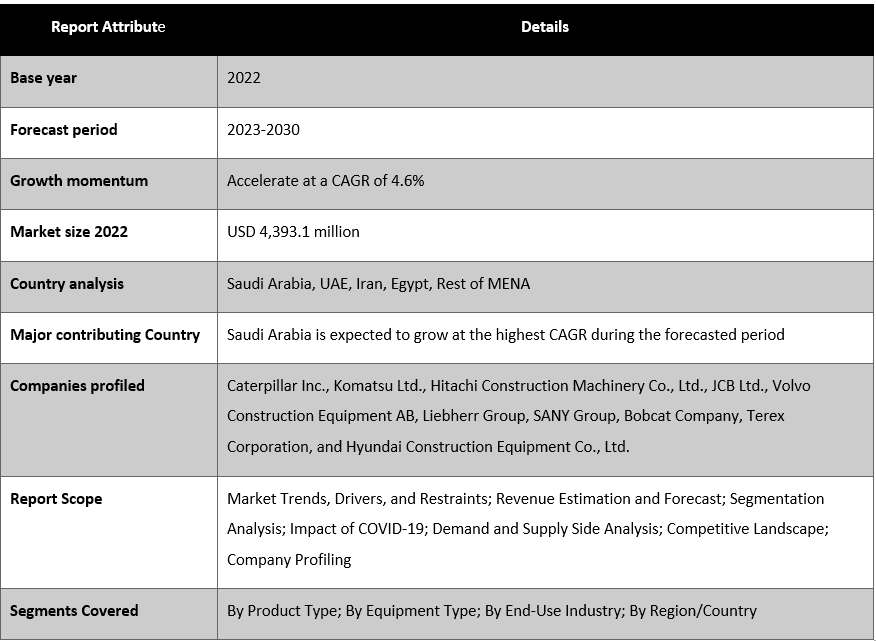
“사우디 아라비아는 예측 기간 동안 높은 연평균 성장률(CAGR)로 성장할 것입니다.”
사우디 아라비아는 NEOM, Red Sea Project, Qiddiya와 같은 대규모 메가 프로젝트를 수행하고 있으며, 이는 고급 및 특수 건설 장비를 필요로 합니다. 이러한 프로젝트는 경제를 다각화하고 외국인 투자를 유치하는 것을 목표로 건설 장비 산업의 성장에 기여합니다. 또한 사우디 아라비아에서는 친환경 건설 장비 사용을 포함하여 지속 가능한 건설 관행에 대한 관심이 높아지고 있습니다. 이는 전력 구동 기계 및 배출량이 감소된 장비와 같은 에너지 효율적이고 환경 친화적인 건설 장비에 대한 수요 증가로 이어졌습니다. 또한 사우디 아라비아는 건설 장비에 대한 현지 제조 공장을 설립하여 수입 의존도를 줄이고 일자리를 창출했습니다. 이러한 현지 제조 능력은 국내 건설 장비에 대한 수요 증가를 충족하고 산업 성장에 기여했습니다.
이 보고서를 구매해야 하는 이유:
- 이 연구에는 인증된 주요 산업 전문가가 검증한 시장 규모 및 예측 분석이 포함되어 있습니다.
- 이 보고서는 전체 산업 성과에 대한 빠른 검토를 한눈에 제공합니다.
- 이 보고서는 주요 비즈니스 재무, 제품 포트폴리오, 확장 전략 및 최근 개발에 중점을 두고 주요 산업 동료에 대한 심층 분석을 다룹니다.
- 산업에 만연한 동인, 제약, 주요 추세 및 기회에 대한 자세한 조사.
- 이 연구는 다양한 부문에 걸쳐 시장을 포괄적으로 다룹니다.
- 산업에 대한 심층적인 지역 수준 분석.
맞춤 설정 옵션:
MENA 건설 장비 시장은 요구 사항 또는 기타 시장 부문에 따라 추가로 맞춤 설정할 수 있습니다. 이 외에도 UMI는 귀하가 고유한 비즈니스 요구 사항을 가지고 있음을 이해하므로 귀하의 요구 사항에 완벽하게 맞는 보고서를 받으려면 언제든지 저희에게 연락하십시오.
목차
MENA 건설 장비 시장 분석 (2023-2030)을 위한 연구 방법론
MENA 건설 장비 시장의 과거 시장 분석, 현재 시장 추정 및 미래 시장 예측은 주요 국가에서 MENA 건설 장비의 채택을 분석하고 생성하기 위해 수행된 세 가지 주요 단계였습니다. 과거 시장 수치를 수집하고 현재 시장 규모를 추정하기 위해 철저한 2차 조사가 수행되었습니다. 둘째, 이러한 통찰력을 검증하기 위해 수많은 결과 및 가정이 고려되었습니다. 또한 MENA 건설 장비 시장의 가치 사슬 전반에 걸쳐 업계 전문가와 함께 철저한 1차 인터뷰도 진행되었습니다. 1차 인터뷰를 통해 시장 수치를 가정하고 검증한 후, 전체 시장 규모를 예측하기 위해 하향식/상향식 접근 방식을 사용했습니다. 이후 산업에 관련된 세분 시장 및 하위 세분 시장의 시장 규모를 추정하고 분석하기 위해 시장 세분화 및 데이터 삼각 측량 방법이 채택되었습니다. 자세한 방법론은 아래에 설명되어 있습니다.
과거 시장 규모 분석
1단계: 2차 출처에 대한 심층 연구:
연간 보고서 및 재무 제표, 실적 발표, 보도 자료 등과 같은 회사 내부 출처와 저널, 뉴스 및 기사, 정부 간행물, 경쟁사 간행물, 부문 보고서, 타사 데이터베이스 및 기타 신뢰할 수 있는 간행물을 포함한 외부 출처를 통해 MENA 건설 장비 시장의 과거 시장 규모를 파악하기 위해 자세한 2차 연구가 수행되었습니다.
2단계: 시장 세분화:
MENA 건설 장비 시장의 과거 시장 규모를 파악한 후, 주요 지역에 대한 다양한 세분 시장 및 하위 세분 시장에 대한 과거 시장 통찰력 및 점유율을 수집하기 위해 자세한 2차 분석을 수행했습니다. 주요 세분 시장은 제품 유형, 장비 유형 및 최종 용도 산업으로 보고서에 포함되어 있습니다. 해당 지역의 테스트 모델의 전반적인 채택을 평가하기 위해 추가 국가 수준 분석이 수행되었습니다.
3단계: 요인 분석:
다양한 세분 시장 및 하위 세분 시장의 과거 시장 규모를 확보한 후, MENA 건설 장비 시장의 현재 시장 규모를 추정하기 위해 자세한 요인 분석을 수행했습니다. 또한 MENA 건설 장비 시장의 제품 유형, 장비 유형 및 최종 용도 산업과 같은 종속 및 독립 변수를 사용하여 요인 분석을 수행했습니다. 전 세계 MENA 건설 장비 시장 부문에서 최고의 파트너십, 합병 및 인수, 사업 확장 및 제품 출시를 고려하여 수요 및 공급측 시나리오에 대한 철저한 분석이 수행되었습니다.
현재 시장 규모 추정 및 예측
현재 시장 규모 측정: 위 3단계의 실행 가능한 통찰력을 바탕으로 MENA 건설 장비 시장의 현재 시장 규모, 주요 업체 및 세분 시장의 시장 점유율에 도달했습니다. 필요한 모든 백분율 점유율 분할 및 시장 세분화는 위에서 언급한 2차 접근 방식을 사용하여 결정되었으며 1차 인터뷰를 통해 확인되었습니다.
추정 및 예측: 시장 추정 및 예측을 위해 이해 관계자가 사용할 수 있는 동인 및 추세, 제약 및 기회를 포함한 다양한 요인에 가중치가 할당되었습니다. 이러한 요인을 분석한 후 관련 예측 기술, 즉 하향식/상향식 접근 방식을 적용하여 주요 시장 전체에서 다양한 세분 시장 및 하위 세분 시장에 대한 2030년 시장 예측에 도달했습니다. 시장 규모를 추정하기 위해 채택된 연구 방법론은 다음을 포함합니다.
- 주요 시장 전체에서 MENA 건설 장비 시장의 수익(USD) 및 채택률 측면에서 산업의 시장 규모
- 시장 세분 시장 및 하위 세분 시장의 모든 백분율 점유율, 분할 및 세분화
- 제공되는 제품 측면에서 MENA 건설 장비 시장의 주요 업체. 또한 빠르게 성장하는 시장에서 경쟁하기 위해 이러한 업체가 채택한 성장 전략
시장 규모 및 점유율 검증
1차 연구: 주요 지역 전체에서 최고 경영진(CXO/VP, 영업 책임자, 마케팅 책임자, 운영 책임자, 지역 책임자, 국가 책임자 등)을 포함한 주요 오피니언 리더(KOL)와 심층 인터뷰를 진행했습니다. 그런 다음 1차 연구 결과를 요약하고 통계 분석을 수행하여 명시된 가설을 증명했습니다. 1차 연구의 입력은 2차 결과와 통합되어 정보를 실행 가능한 통찰력으로 전환했습니다.
MENA 지역 건설 장비 시장의 주요 이해 관계자
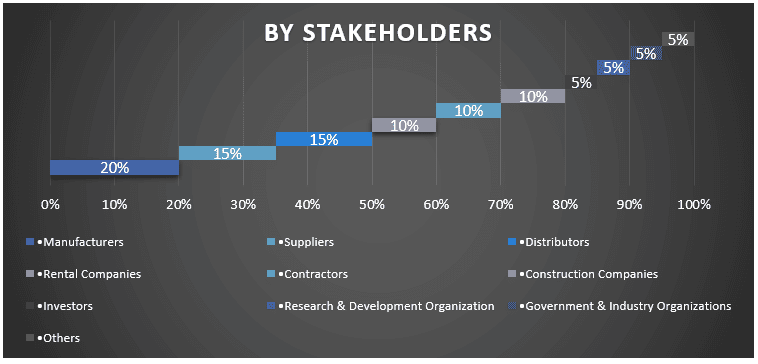
시장 엔지니어링
데이터 삼각 측량 기술은 전체 시장 추정을 완료하고 MENA 건설 장비 시장의 각 세분 시장 및 하위 세분 시장에 대한 정확한 통계 수치에 도달하기 위해 사용되었습니다. 데이터는 MENA 건설 장비 시장의 제품 유형, 장비 유형 및 최종 용도 산업 분야의 다양한 매개변수 및 추세를 연구한 후 여러 세분 시장 및 하위 세분 시장으로 분할되었습니다.
MENA 건설 장비 시장 연구의 주요 목표
MENA 건설 장비 시장의 현재 및 미래 시장 동향은 연구에서 정확히 지적되었습니다. 투자자는 연구에서 수행된 질적 및 양적 분석을 기반으로 투자를 재량할 수 있는 전략적 통찰력을 얻을 수 있습니다. 현재 및 미래 시장 동향은 지역 및 국가 수준에서 시장의 전반적인 매력도를 결정하여 산업 참가자가 미개척 시장을 활용하여 선점자 이점을 누릴 수 있는 플랫폼을 제공했습니다. 연구의 다른 양적 목표는 다음과 같습니다.
- 가치(USD) 측면에서 MENA 건설 장비 시장의 현재 및 예측 시장 규모를 분석합니다. 또한 다양한 세분 시장 및 하위 세분 시장의 현재 및 예측 시장 규모를 분석합니다.
- 연구의 세분 시장에는 제품 유형, 장비 유형 및 최종 용도 산업 분야가 포함됩니다.
- MENA 건설 장비 산업에 대한 규제 프레임워크를 정의하고 분석합니다.
- 다양한 중개인의 존재와 관련된 가치 사슬을 분석하고 업계의 고객 및 경쟁자 행동을 분석합니다.
- 주요 지역에 대한 MENA 건설 장비 시장의 현재 및 예측 시장 규모를 분석합니다.
- 보고서에서 연구된 지역의 주요 국가에는 사우디 아라비아, UAE, 이집트, 이란 및 기타 MENA 국가가 포함됩니다.
- MENA 건설 장비 시장의 회사 프로필과 빠르게 성장하는 시장에서 유지하기 위해 시장 참여자가 채택한 성장 전략
- 산업에 대한 심층적인 지역 수준 분석
관련 보고서
이 상품을 구매한 고객님들도 함께 구매하신 상품

